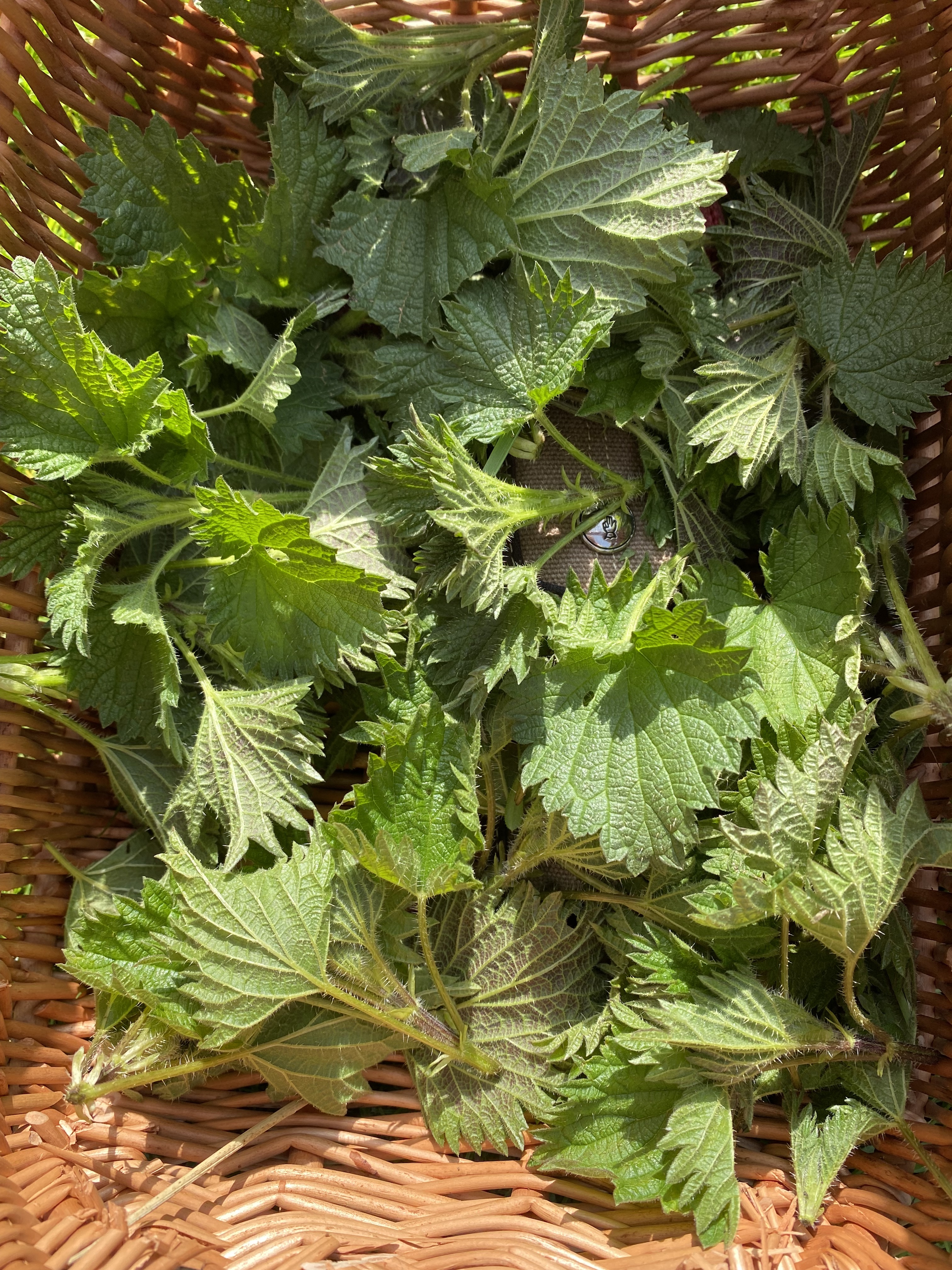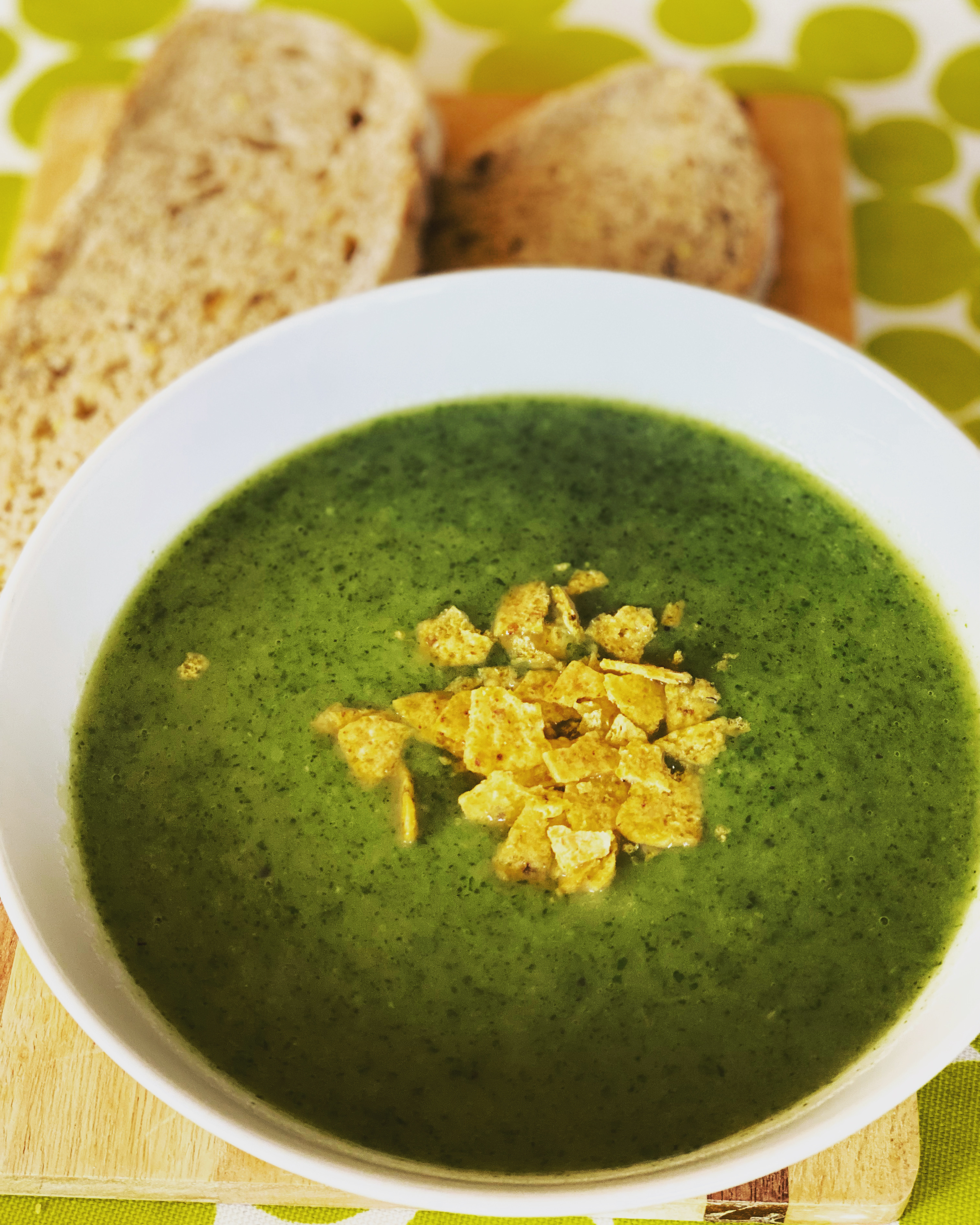The Wonder of Stinging Nettles
Mention the words Stinging Nettles to any keen foragers and their eyes will light up with a smile of delight. To everyone else those two words bring memories of painful stings and nasty rashes. So why are foragers so excited by them?
Stinging Nettles (Urtica dioica) are incredibly nutritious, particularly the young shoots that are popping up now (late March). They contain one of the highest levels of protein of the entire plant kingdom together with vitamins A, C, K and several B vitamins, plus iron, potassium, magnesium, phosphorous, calcium, zinc, copper, manganese, selenium and sodium. Quite an impressive list and enough to class them as a "super food".
And if the nutritional benefits aren't enough, herbalists believe that Stinging Nettles can detoxify your body, help settle female reproductive hormones, reduce inflammation, ease seasonal allergies and lower blood pressure. There are a number of research projects being carried out to provide scientific evidence of the health benefits of this amazing plant.
And they are freely available everywhere - it's hard to go for a walk without seeing stinging nettles. Many people have nettles growing in their garden, often digging them up with a view to removing them completely. Not always an easy task as they will grow back from the tiniest of root left in the soil. The joy is now, of course, that we don't need to do this anymore. With all their nutritional benefits we can all see them as a vegetable and not a weed.

Harvesting nettles can be tricky - you will need to be careful. Snipping the tips off with a pair of scissors with the basket held underneath works for us, other people grasp the nettle with rubber gloves on. The tip and first two pairs of leaves are tender, packed with nutrients, and are not stringy. The older stems are very fibrous and may contain oxylate crystals which can cause urinary tract problems so these are best avoided. As we move further into summer, Stinging Nettles grow very tall and start to flower - at this point the stems and leaves have become too stringy to eat really and the best of their nutritional value has gone.
Stinging Nettles have male and female plants with only the females bearing seeds in long tassle-like seed heads. The seeds are incredibly nutritious and can be carefully harvested, and added to smoothies, cakes, breakfast cereals and many other dishes to boost the vitamins and minerals in those dishes.
So now that you're convinced about the health benefits you're probably wondering how to cook Stinging Nettles? The answer is in any dishes that you would normally add spinach to, and they taste pretty similar too. Nettle tea is the quickest and easiest way to access those minerals and vitamins, and it's delicious too (don't leave the nettle tips in the hot water for too long otherwise the tea will change from a delicate green to a gloomy black - it's fine to drink but just doesn't look that appealing).
Stinging Nettles can be used in a range of different recipes, heres a few ideas:-

Stinging nettles can be perserved a couple of different ways. Firstly, the tops can be dried and saved in airtight jars to be used in making tea or crumbled onto salads, soups etc. Secondly, they can be frozen - blanch the nettle tops in boiling water for 3-4 minutes, drain and cool, divide the now stingless and soft nettles into palm sized balls and then freeze in trays keeping each ball separated to stop them sticking together as they freeze.
We hope that you have been inspired to try this amazing wild food and enjoy its nutritious benefits. We do recommend that you give them a go - its too cheesy to say "Grasp the nettle".
Stinging Nettles (Urtica dioica) are incredibly nutritious, particularly the young shoots that are popping up now (late March). They contain one of the highest levels of protein of the entire plant kingdom together with vitamins A, C, K and several B vitamins, plus iron, potassium, magnesium, phosphorous, calcium, zinc, copper, manganese, selenium and sodium. Quite an impressive list and enough to class them as a "super food".
And if the nutritional benefits aren't enough, herbalists believe that Stinging Nettles can detoxify your body, help settle female reproductive hormones, reduce inflammation, ease seasonal allergies and lower blood pressure. There are a number of research projects being carried out to provide scientific evidence of the health benefits of this amazing plant.
And they are freely available everywhere - it's hard to go for a walk without seeing stinging nettles. Many people have nettles growing in their garden, often digging them up with a view to removing them completely. Not always an easy task as they will grow back from the tiniest of root left in the soil. The joy is now, of course, that we don't need to do this anymore. With all their nutritional benefits we can all see them as a vegetable and not a weed.

Harvesting nettles can be tricky - you will need to be careful. Snipping the tips off with a pair of scissors with the basket held underneath works for us, other people grasp the nettle with rubber gloves on. The tip and first two pairs of leaves are tender, packed with nutrients, and are not stringy. The older stems are very fibrous and may contain oxylate crystals which can cause urinary tract problems so these are best avoided. As we move further into summer, Stinging Nettles grow very tall and start to flower - at this point the stems and leaves have become too stringy to eat really and the best of their nutritional value has gone.
Stinging Nettles have male and female plants with only the females bearing seeds in long tassle-like seed heads. The seeds are incredibly nutritious and can be carefully harvested, and added to smoothies, cakes, breakfast cereals and many other dishes to boost the vitamins and minerals in those dishes.
So now that you're convinced about the health benefits you're probably wondering how to cook Stinging Nettles? The answer is in any dishes that you would normally add spinach to, and they taste pretty similar too. Nettle tea is the quickest and easiest way to access those minerals and vitamins, and it's delicious too (don't leave the nettle tips in the hot water for too long otherwise the tea will change from a delicate green to a gloomy black - it's fine to drink but just doesn't look that appealing).
Stinging Nettles can be used in a range of different recipes, heres a few ideas:-
- Nettle and lemon cake
- Nettle soup
- Nettle tea
- Nettle and chickpea curry
- Nettle pasta - made in the same way as spinach pasta
- Nettle beer
- Nettle chutney

Stinging nettles can be perserved a couple of different ways. Firstly, the tops can be dried and saved in airtight jars to be used in making tea or crumbled onto salads, soups etc. Secondly, they can be frozen - blanch the nettle tops in boiling water for 3-4 minutes, drain and cool, divide the now stingless and soft nettles into palm sized balls and then freeze in trays keeping each ball separated to stop them sticking together as they freeze.
We hope that you have been inspired to try this amazing wild food and enjoy its nutritious benefits. We do recommend that you give them a go - its too cheesy to say "Grasp the nettle".
